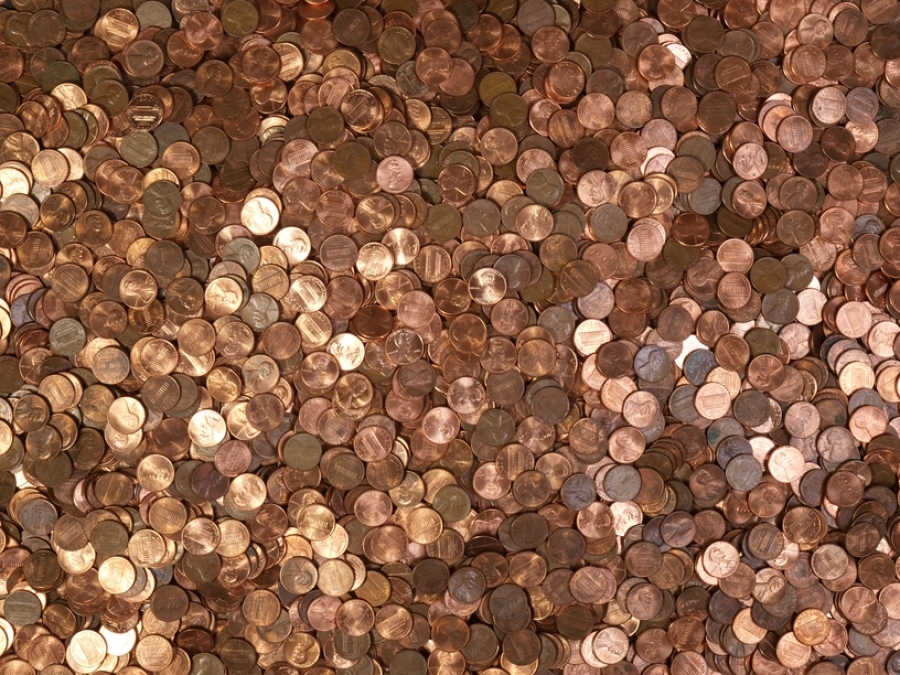If you’ve spent any length of time on Pinterest, we’re sure you’ve seen some really creative and fun DIY ideas. Recently, we came across one DIY project that looked fantastic and really intrigued us. We thought this could be a fun and interesting DIY project and so we put together a few instructions on how to tile a floor using pennies.
There are many ways to tile a floor using pennies, but for this blog we are going to use the tile mesh method which seems like it would be a little easier and quicker to do.
Items you’ll need:
- Pennies
- Adhesive Sheet or Self Sticking Tile Mesh
- Glue
- Thinset Mortar
- Unsanded Grout
- Rubber Tile Float
- Sponge
- Cloth
- Notched Trowel
- Non-Toxic Grout Sealant
- Penny Template
Step 1: Prep Floor Surface
Before you dive in and start adhering the pennies to the floor, the first thing you need to do is prep your floor surface. Remove any old flooring and strip it down to either the plywood sub floor or the cement flooring. If you notice any cracks in the cement or plywood you’ll need to make some quick repairs to insure you have a smooth and level surface for the penny application. Sweep away any loose debris, wash and allow the floor to dry.
Step 2: Prep Adhesive Sheet Or Tile Mesh
Once you’ve prepped your floor, the next step is to apply the pennies to the adhesive sheet or tile mesh with the help of a penny template. Apply the pennies into the penny template, then apply your adhesive sheet or mesh over the top of the template and press firmly. Remove the adhesive paper or mesh along with the pennies from the template and the pennies will be ready to be placed on your floor.
Step 3: Layout Your Pattern
After you’ve applied the pennies to the adhesive sheet or tile mesh through the use of the penny template, it should be relatively easy to work with them and lay them out on the floor to see how everything will fit together. After you’ve figured out your pattern, pick up your sheets in the order you’ve laid them and move on to step four.
Step 4: Apply Mortar
Use the flat side of your notched trowel to spread a layer of the thinset mortar and then comb with even horizontal lines. Remember to work in small sections of no more than 3” by 3” or the mortar will dry before you get to the end. Press each penny mesh gently into the mortar then let it dry for approximately 24 hours.
Step 5: Grout The Pennies
Mix the tile grout according to the directions on the bag. Using your rubber float, apply a layer of grout diagonally across the pennies at a 45-degree angle. In approximately 30 minutes the grout will harden and you can then use a damp sponge to wipe away any excess grout, then allow it to completely dry.
Step 6: Apply Non-Toxic Sealer
Once the grout is completely dry, begin wiping down the pennies again with a damp sponge and use a cloth to polish the pennies. After the pennies are dry, apply the non-toxic grout sealant and allow it to dry.
References:
http://www.prettypurpledoor.com/projects/copper-penny-floor-template/
http://www.prettypurpledoor.com/projects/copper-penny-floor-installation/
http://www.wikihow.com/Install-Floor-Tile
http://homeguides.sfgate.com/tile-floor-pennies-47029.html
http://www.pennyfloortemplate.com/collections/copper-penny-templates/products/basic-penny-floor-template-tray




